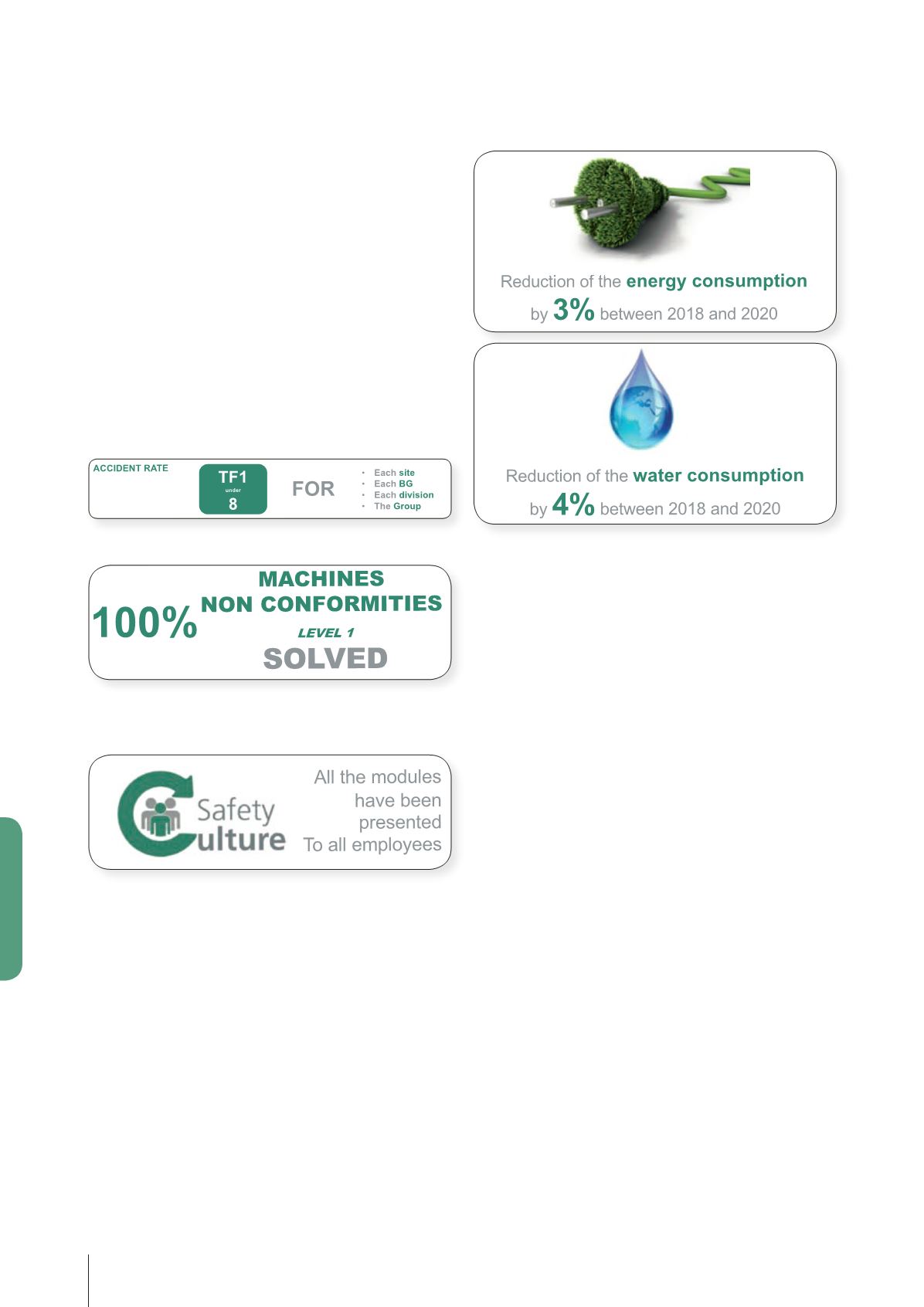
 114
LISI 2018 FINANCIAL REPORT
CORPORATE SOCIAL RESPONSIBILITY
6
114
LISI 2018 FINANCIAL REPORT
CORPORATE SOCIAL RESPONSIBILITY
6
7.3
I
The objectives
Keen to attain Operational Excellence in this field, the LISI Group has
determined ambitious targets for 2020.
It is not LISI’s intention to limit itself solely to the requirements of the
ISO 14001 and OHSAS 18001 standards. It has defined increasing levels of
requirements-“Bronze”,“Silver”,and“Gold”.ThuseachoftheGroup’ssites
must comply with a number of requirements corresponding to the
“Bronze” level of its LISI Excellence HSE program.
Health-Safety objectives
Furthermore, in the field of Health and Safety at work, LISI has set as
target that each site should have an accident rate of less than eight
workplaceaccidentspermillionofhoursworked(whetherwithorwithout
lost time and whether they involve LISI employees or temporary workers
working for it).
This development must be implemented in intervals and for 2020, the
target for the frequency rate is 8.
To achieve this, LISI has set two other targets which will contribute to
reducing the accident rate.
First of all, LISI’s intention is to secure itsworking equipment, byworking
on the compliance of its machines, in particular those that are the most
hazardous.
The safety of persons working for LISI or under its control also requires
the development of a safety culture on an everyday basis.
LISIhasthusdevelopeditsownsafebehaviordevelopmentprogram:SCP
(Safety Culture Program). The first step consists in training sessions for
allmanagersoftheGroupsothattheycanconductthe18trainingmodules
of the SCP program. Secondly, these samemanagersmust, in 15-minute
sessions, communicate the prevention messages defined in relation to
safebehavior.LISIaimstorolloutallofthemodulestoallGroupemployees
by 2020.
Environmental objectives:
Concernedabout the impact of its activities onclimatechange, LISI aims
to reduce its energy consumption by 3% between 2018 and 2020. The
assessment of greenhouse gas conducted in 2017 showed that LISI’s
impact on climate change is primarily linked to energy consumption.
Accesstowater isalsoagrowingproblem.LISI isthereforecommittedto
reducing water consumption by 4%over the same period.
7.4
I
Health and Safety Performance
ThetoolsofLISI’sE-HSEprogramarebearingtheirfruit.The involvement
of all of the Group’s employees and managers and their unrelenting
resolvewhenfacedwithaworkaccidenthasresultedinaveryencouraging
result today.
To measure its performance, LISI monitors the accidentology of its
employees but also of temporary workers working on its behalf and for
the eighth consecutive year, the Group’s results are improving.
The rate for accident frequency with employee being on sick leave, for
LISI employees (TFO) dropped by 56% in ten years to 6.63 accidents per
million of hours worked at end-2018.
The accident frequency rate, with or without sick leave, declined by 65%
in ten years for LISI employees, and by 61% for LISI employees and
temporary workers taken together. This frequency rate, referred to as
TF1, is 911 accidents, with or without lost time, per millions of hours
worked for LISI employees. For the first time, this rate has fallen below
the symbolic threshold of 10 accidents per million of hours worked.
Note that for employees and temporary workers combined, this rate is
10.11. The frequency rate for temporary workers alone, which is 20.9 in
2018, has improved by 39% over five years thanks to better facilities for
newcomers, among other measures.
With respect to production sites, 66% have a frequency rate, with or
without sick leave, below 10 accidents permillion of hoursworked, which
is the objective set for 2018.


















